Abandoned Belarus. Part Three
- 03.09.2016
- 37271
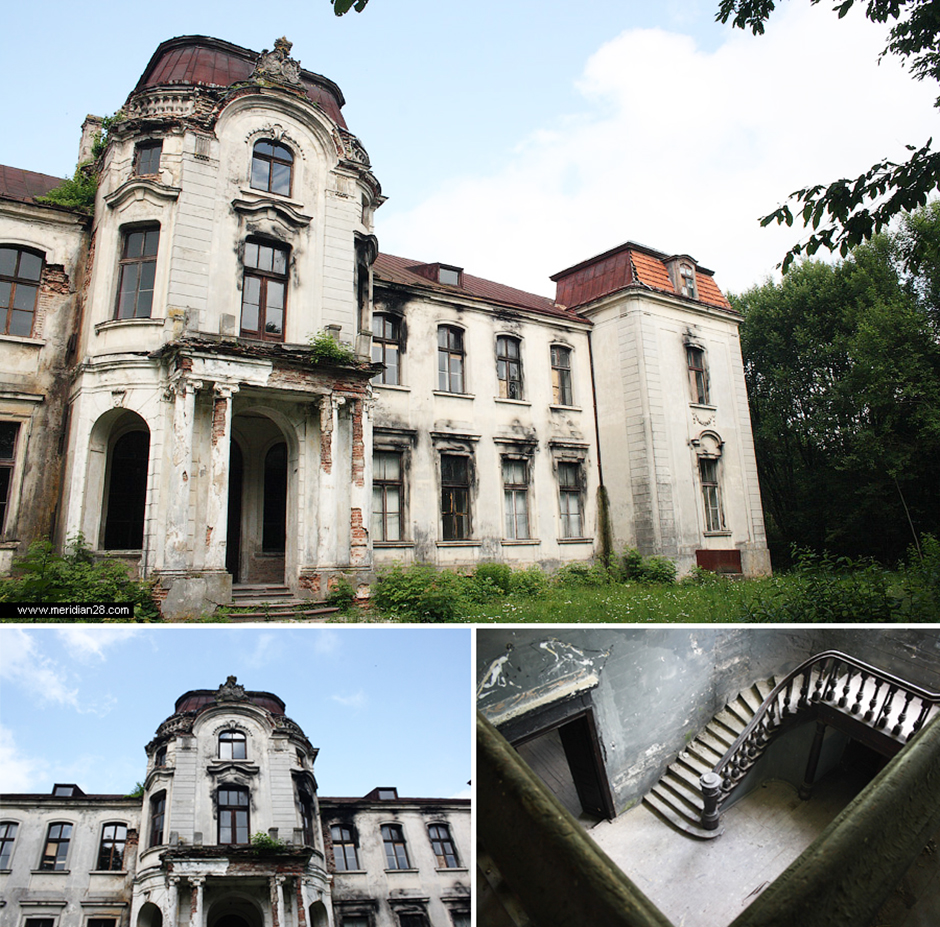
The Chatsvyartinski palace
Urban-type settlement Zhaludok, Shchuchin district
Moviegoers will immediately recognize the palace: right here the first Belarusian horror, “Masacra”, was made. Film decorations are still there: plywood tiles, paper instead of wallpapers, "charred walls effect" on the facade. Much has survived from the Soviet period – when the Bolsheviks arrived the palace was given to the military since next to it an anti-aircraft missile unit was based which was used as a place for soldiers to live and rest. For instance, there's a film club with a booth; the Soviet symbols – red stars – are abundant here.
Originally the palace was intended as a place to receive guests of the Chatsvyartinski family. It was built in 1908 in the center of a big park – it's a piece of typical modern style, a project of a famous architect Marconi from Italy. To feel the grandeur of the place go through the main entrance – in the center of the building authentic staircases, tiles, doors and decorations over the door frame have been preserved. The tile of the epoch when the Chatsvyartinski family lived can be seen on the floor in the toilet, in the bathroom and in the backstairs; on the back of the tiles you can notice the Star of David – a logo of a Jewish craft workshop.
If you go up to the attic, it'll seem to you that you're in the center of a painting by René Magritte:
the doors to nowhere which just stand in the middle of an empty room are waiting for you there.
Read more here
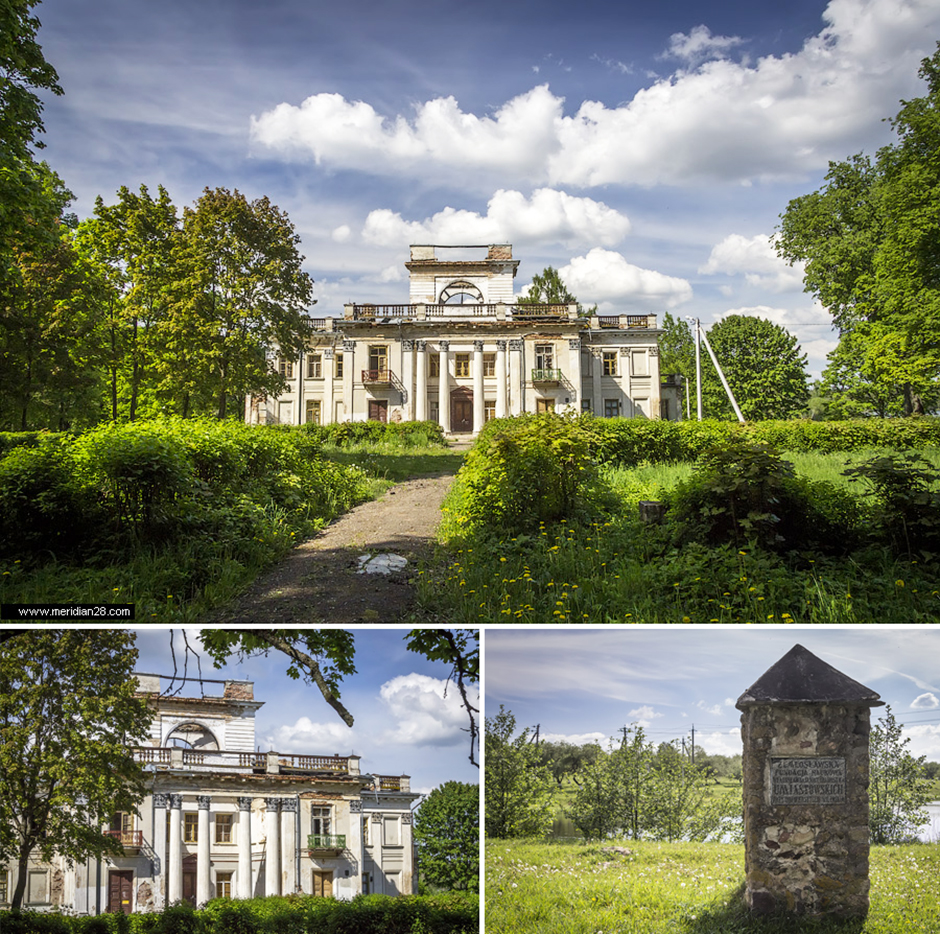
The Umyastouski palace
Zhemyslaul' village, Iyeu district
Everybody who at least once went to Warsaw not only to do shopping, but also to get acquainted with its culture will have a flashback in the Umyastouski palace near a half-abandoned village of Zhemyslaul'. It is an exact copy of the Royal Lazienki https://en.wikipedia.org/wiki/Łazienki_Park Royal Baths), one of the most beautiful architectural complexes of Warsaw. The project of the noble Polish Umiastouski family was so ambitious that the palace was being built during 72 years beginning from 1805. The calculations were done by Marconi who was the author of the project of the palace in Zhaludok.
The function of the palace constantly changed: at the very beginning it was intended as a family palace for the noblemen, later it was transferred to the University of Vilnya (the inscription on the stone pillar meaning "The Estate of Science" proves this fact); during the First World War it housed a sanatorium for German soldiers and in Soviet times it served as the administrative center of the collective farm and of the village council. The palace was affected to the greatest extent in 2012 due to the fires when the roof and some poles burnt. Now the building is in a very poor technical condition but this doesn't prevent from getting inside and walk around the rooms, touch original oak panels and doors, make a few cool photos on the balcony overviewing the river. Next to the estate you will see a small hydroelectric power plant with a picturesque pond as well as many household buildings which are well preserved. Take a bottle of red wine with you to drink it on the bank of the Hauya river – the landscape here is a pleasure for the eyes.
Read more here

Slonim Synagogue
Slonim town
One of the oldest synagogues of Belarus is situated in the very center of Slonim, to be more exact, at 1 Savetskaya Street. It is 1642 years old! Before the First World War it was the center of Jewish life in the town, but almost no one of those who used to visit this place survived the war. Earlier the believers of any religion were persecuted and nobody wanted to risk so the synagogue was transformed into a furniture warehouse. In the beginning of the 2000s it was returned to the Jewish community but the money to restoration have never been allocated.
The main attraction of the synagogue is the Aron Kodesh, or the closet which contained Torah scrolls. The closet is still richly decorated even though almost all its beauty has gone. The menorah which was constantly burning was situated a bit higher; there were also Ten Commandments tablets made of stucco molding. Researchers believe that this approach to molding can't be found in any other Belarusian temple – it's typical only of Slonim. Take a look at the bimah (an elevated platform where a rabbi was reading Torah) – you have never seen such paintings!
Read more here
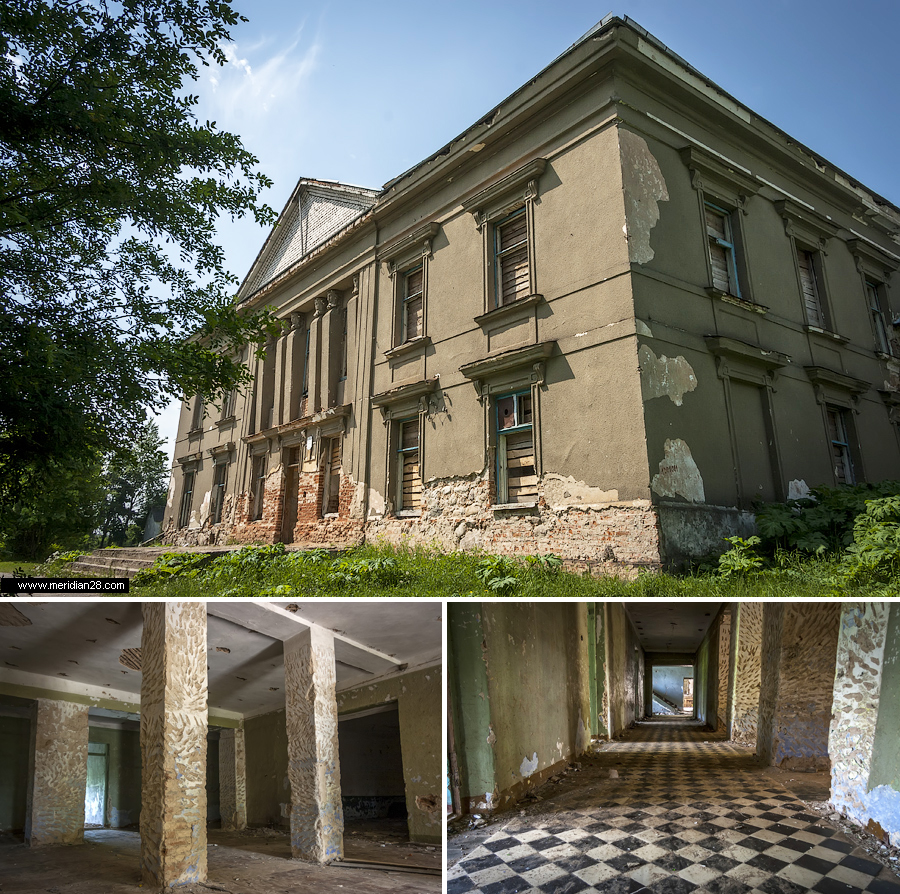
The Radzivily Palace
Palanechka village, Baranavichy district
In the 17th century the palace that used to be owned by the richest noble family in the Grand Duchy of Lithuania looked like a separate microcosm: the front yard with the estate, a French park and an English one, a chapel, a greenhouse, a water system consisting of six ponds, a long driveway, a household yard and even a mill. The two-floor palace itself looked quite simple and functional on the outside but its interior turned out to be a pleasant surprise for its visitors. Mirrored walls in the large hall, chic cupboards made of fine woods in the library, a collection of globes and engravings as well as the arches made of Karelian birch in the bedroom of Prince Constantine (who was one of the owners of the place) – all these looked especially amazing.
Now the memories of historians are the only thing which remains of this beauty: for the last decades the palace served as a school so all what could have been destroyed has indeed been plundered, spoilt and repainted. A couple of years ago the palace was bought out by a private enterprise with the aim to renovate it but the work still hasn't begun. Come to Palanechka not only to see the palace and remember the days of former glory, but also to enjoy the nature – all noblemen used to choose good places where to build their mansions.
Read more here
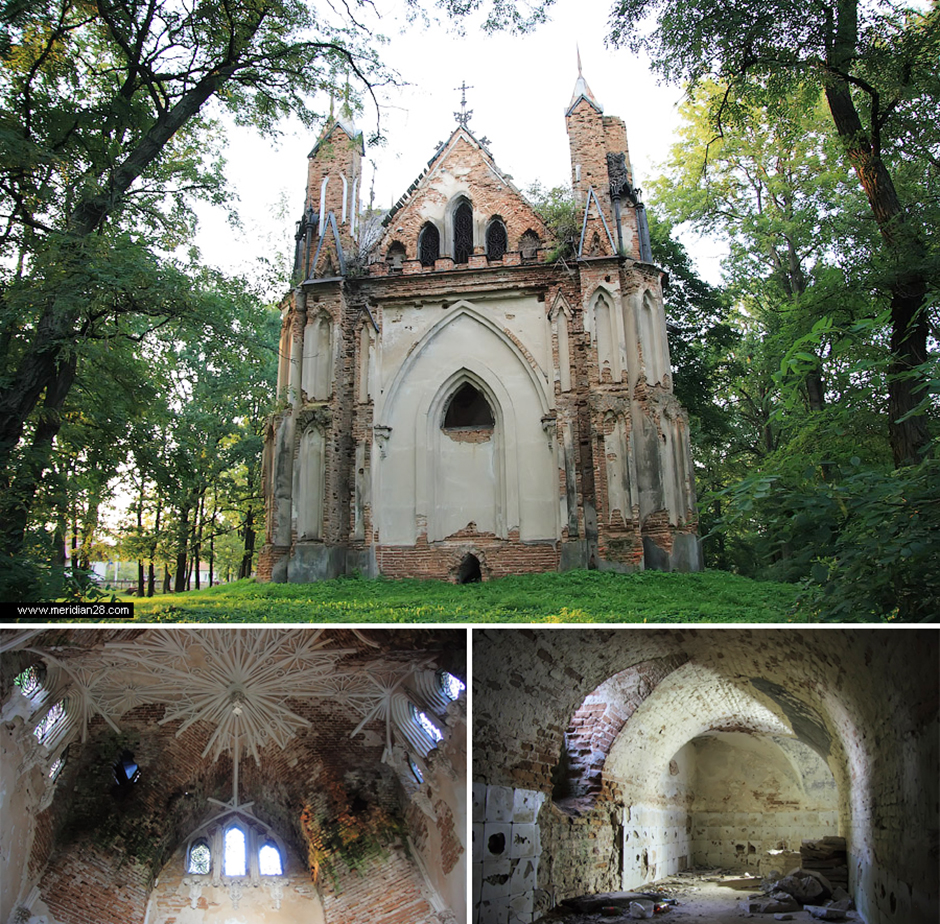
The tomb-chapel of the Azheshak family
Zakazel village, Dragichyn district
One of the oldest Neo-Gothic and the most enchanting buildings of the country is situated in Zakazelle village that used to belong to the noble family of Azheshak from which a famous writer Eliza Azheshak came. The tomb-chapel was built in 1849. Now it's surrounded by a well-maintained park where wrought-iron lanterns can be seen.
Find the coat of arms of the Azheshak family on the facade and also take a look inside (at least through the bars): the ceiling there is decorated with openwork stucco molding which looks like a chic lace, and exquisite wrought-iron bars are installed on the windows. You can go down to the tomb situated under the chapel and feel like a leader of the uprising of 1863 – historians believe that here was hiding one of the companions of Kalinouski, Ramuald Traugut.
Read more here
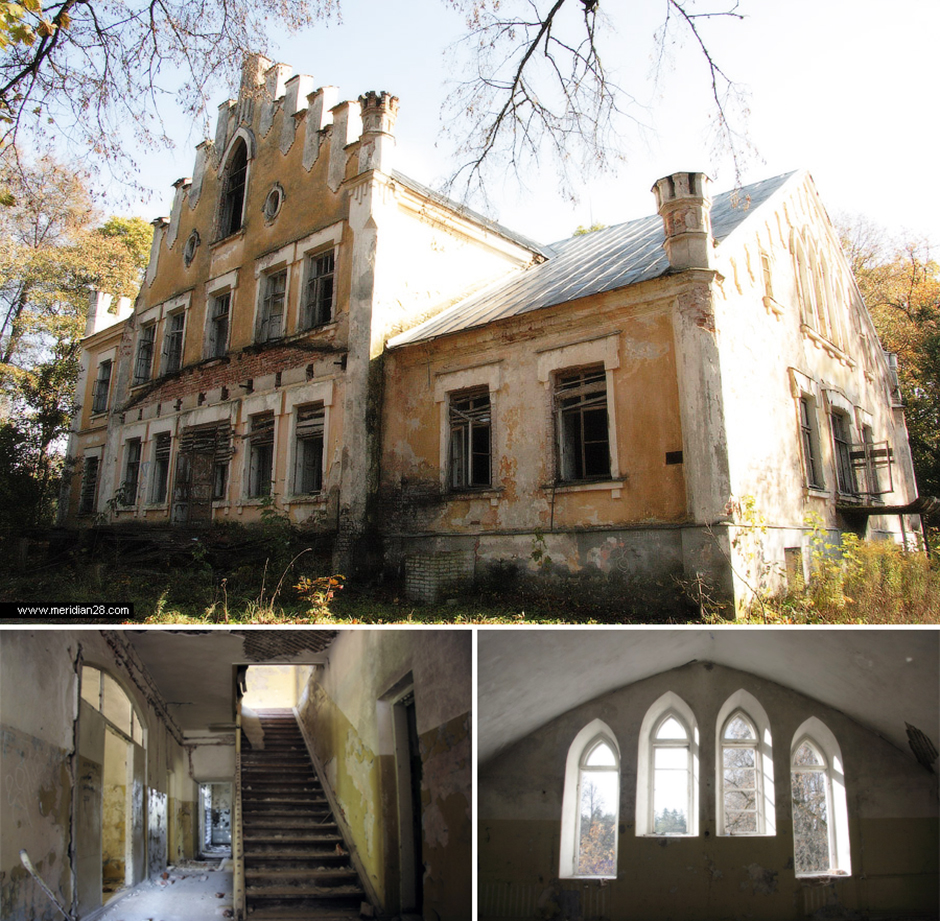
The Bohvitsy mansion
Paulinava village, Baranavichy district
This pretty mansion was built in Neo-Gothic style in 1906. Some generations of the Bohvitsy family took pride in their mansion situated right in the center of the dense forest on the shore of an artificial lake. During the Soviet era the mansion served as a hospital which left a notable mark on its interior. But even so it's pleasant to take a walk around rooms flooded with sunlight and admire amazing gothic windows and doors pointed in their design. But look under your feet – a couple of decades ago the schoolchildren from the situated nearby "Chabarok" summer camp used to sneak into the mansion so you can easily trip over the traces of their spending time here.
Read more here
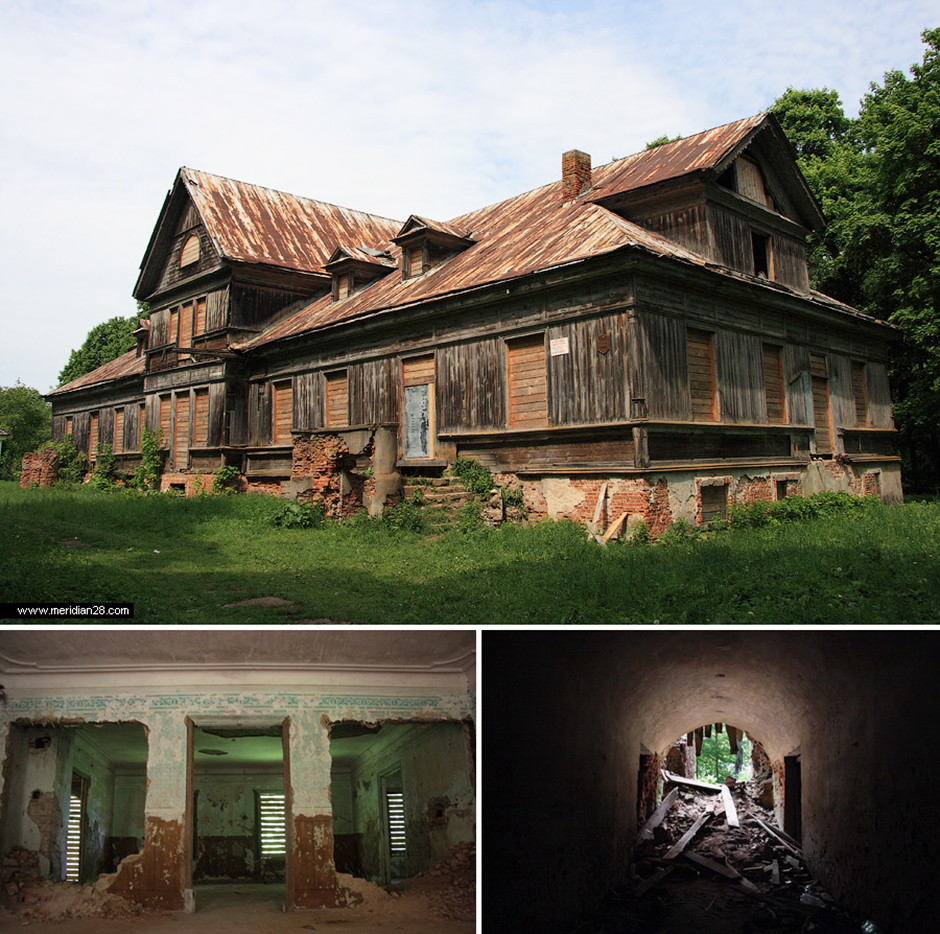
The Reitany mansion
Hrushauka village, Lyahavichy district
This wooden mansion belonged to the old polish family of Reitany, and the first house of the noble family was built here in stone as early as in the 16th century. In the end of the 16th century Pan Jozef was governing Hrushauka. He had poor health and doctors warned him against living in a stone house so a modern version of the mansion was built from high-quality beam on the stone foundation. Dutch tile stoves, paintings, carving – the remnants of former splendor have been preserved up to now.
Visit this abandoned mansion to meditate a bit looking at the dust whirling in the rays of the sun which get into the room through the holes; find a Neo-Gothic chapel in the yard of the mansion and make friends with goats who are walked in the former park by local grannies.
Read more here
Photo by Meridian'28
Translation by Alexandra
Read more:
Урбан, дзетка!
Мы звязаліся з 18-гадовым арганізатарам Minsk Urban Weekend, каб даведацца, чаго чакаць ад самай буйной падзеі ў менскай стрыт-культуры апошняга часу.
Город-спикизи
Редакторка Татьяна Каймович о том, как сложно оказаться своим в минских тусовках.
Скенк мі аут!
Выходныя агалцелага драйву на дні народзінаў «Бассоты» скончыліся. Нашая візуальная каманда вытрымала амаль 30 гадзінаў скенку. Фота і відэафлэшбэкі адмыслова для цябе ніжэй.
On main page:
Maria Gulina: art management from eco-art to socially engaged practice
A journey from local environmental workshops to art management and working with socially engaged photography in an international gallery.
Emil Zenko: "It's satisfying to learn that someone bought your vinyl without having a record player"
The conversation about filming in a Belarusian village, the kitchen of ideas and the search for funds.
Timeline: How Belarus (Doesn’t) Fight Domestic Violence
A story about (or no) cooperation between government representatives, NGOs and ordinary people that care.
Why are gay people being detained in Azerbaijan?
Javid Nabiyev speaks on arrests of gay people in Azerbaijan, explains the «fucking solidarity» term and the point of activism.
White innocence: fighting racism in the Netherlands
Joris Hanse, Dutch activist from the Doorbraak, speaks about the Netherlands not matching the stereotypes.
In a wolf's skin
A philosophical audio story about a wolf, people who care for it and people who kill it.